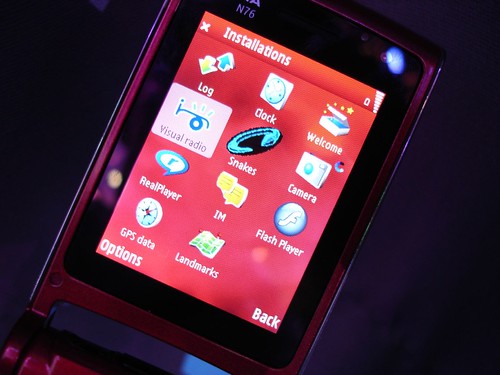
Installations Folder on N76 by RafeB @ flickr
Nokia Visual Radio had everything going for it, so why hasn’t it taken off?
The premise of adding visual and interactive content to radio has been proven by various research projects, and Nokia showed an outstanding commitment by putting the client software on virtually every one of their mainstream handsets for the last couple of years. Given the normal churn rate of handsets, that must mean that virtually every Nokia phone in mainstream use (and in turn, the majority of handsets in use) has access to the service. That’s millions and millions of consumers in most European countries who could access synchronised visual content from radio stations, and interact. From a commercial point of view, it ought to be an incredibly powerful proposition – direct response to radio/visual advertising from mobile handsets.
So why are there only 3 UK radio stations participating? Why are there less than 20 stations worldwide using the technology?
The biggest single stumbling block has been a comprehensive mis-understanding of the degree of effort radio stations were able (or willing) to put into producing the service. The initial software was so laughably bad, it was actually comical. I know one station that pretty much had three people authoring the output in real-time; that’s not software, that’s a pair of lead-boots. Nokia had advisors with plenty of technology experience, it’s fascinating to see such a disconnect with the real world of radio.
I was really pleased to see this critical bit of the chain fixed recently, with the news that RCS’s excellent (and frankly, visionary) Radioshow software is going to be the authoring tool for radio stations. Or more to the point, it allows radio stations to enter the Visual Radio business by simply piping their “playing now” information from their playout system through to RCS. Hopefully by dramatically lowering the bar, there will be far more stations on the service, creating the critical mass to make it a mainstream success.
There are more things that could be improved with Nokia Visual Radio – it should use RDS to identify a station and start the NVR service, rather than the extremely clunky directory system; and of course, the best way to deliver radio and data services to mobile devices is DAB Digital Radio. But I would say that Nokia have already invested a lot in Nokia Visual Radio, so for the time being it might be good for the radio industry to show some interest in return.